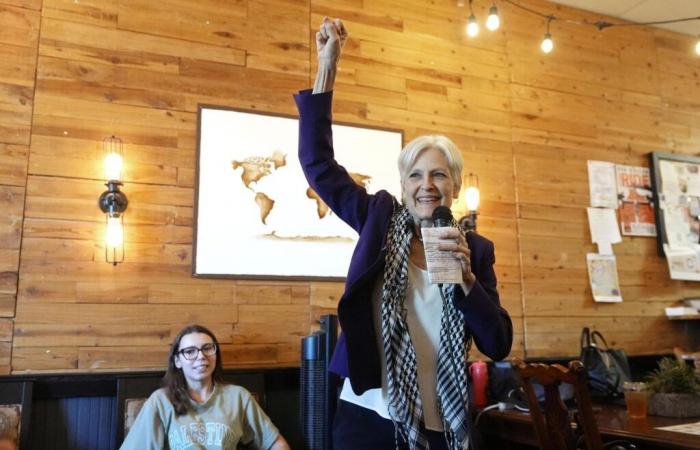At first glance, Jill Stein is a most innocuous candidate. With her inseparable Palestinian keffiyeh around her neck, her antimilitarist positions and her 1% voting intentions in the American presidential election on November 5, this environmentalist, marked on the extreme left, has absolutely no chance of accessing the White House.
This 74-year-old retired doctor, with clear eyes and short silver hair, is still considered by the Democratic camp as a thorn in the side of Kamala Harris.
In the pivotal state of Michigan, which has more than 300,000 residents of Middle Eastern or North African origin, Jill Stein appeals to many voters disappointed by the support of Joe Biden's vice-president for Israel in the conflict in Gaza. The environmentalist – who campaigns for a $25 minimum wage, the abolition of student debt and the creation of green jobs financed by massive cuts in the defense budget – also appeals to the left wing of the Democratic Party and to former Bernie Sanders supporters who feel betrayed by the centrist Democratic establishment.
For Bruce Schulman, professor of history at Boston University, “votes going to the Green Party can be seen as fewer votes for Harris and the Democrats”. During the last election, “the key states were decided by 40,000 votes, in some places, recalls the researcher. If these elections are as close as expected »certain third-party candidacies, like that of Jill Stein, could swing the election.
Advertising blitz
Within the Democratic camp, many keep in mind the 2016 election, during which the environmentalist was already a candidate: at the time they attributed part of the responsibility for Hillary Clinton's defeat to Jill Stein. This had won a total of some 132,000 votes in Wisconsin, Michigan and Pennsylvania while the former Obama secretary of state had lost these three key states by 77,000 votes.
“There were enough pro-Stein voters to swing the outcome, just like Ralph Nader (a previous environmentalist candidate for the 2000 presidential election opposing Bush to Al Gore, Editor's note) had done it in Florida and New Hampshire”, noted Hillary Clinton bitterly in her memoirs What happened (in French: It happened like thispublished by Fayard), published in 2017. This time, the democratic camp plans to respond to the environmentalist's candidacy.
In the final days of the campaign, the party spent more than $500,000 to fund election ads aimed at dissuading voters in swing states from voting for Stein and other third-party candidates. “Jill Stein already helped Trump once. Don’t let her do it again,” beg in particular a series of giant advertising panels installed at the side of the roads of several swing states.
The Republicans, for their part, intend to take advantage of the divisions on the left. According to several American media, voters in the pivotal states of Wisconsin and Georgia have been bombarded in recent days with text messages and recorded telephone messages from two conservative “super PACs” (these “political action committees” which can directly finance a candidate but can spend lavishly on advertising or field actions), encouraging them to vote on November 5 for the environmentalist candidate.






